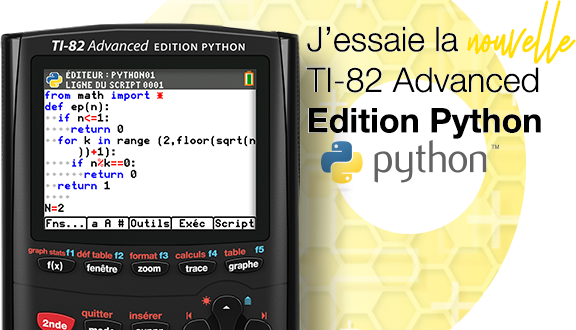stress strain explanations
DownloadTélécharger
Actions
Vote :
ScreenshotAperçu

Informations
Catégorie :Category: nCreator TI-Nspire
Auteur Author: oONOLTZOo
Type : Classeur 3.0.1
Page(s) : 1
Taille Size: 3.29 Ko KB
Mis en ligne Uploaded: 10/10/2024 - 08:51:28
Uploadeur Uploader: oONOLTZOo (Profil)
Téléchargements Downloads: 1
Visibilité Visibility: Archive publique
Shortlink : http://ti-pla.net/a4245260
Type : Classeur 3.0.1
Page(s) : 1
Taille Size: 3.29 Ko KB
Mis en ligne Uploaded: 10/10/2024 - 08:51:28
Uploadeur Uploader: oONOLTZOo (Profil)
Téléchargements Downloads: 1
Visibilité Visibility: Archive publique
Shortlink : http://ti-pla.net/a4245260
Description
Fichier Nspire généré sur TI-Planet.org.
Compatible OS 3.0 et ultérieurs.
<<
The stress-strain curves shownin Figure 2 belong to the same polymeric material, but they were tested atdifferent temperatures. Answer the following questions: a. Which curve wasobtained at a higher temperature? Explain your choice. b. In curve B, betweenpoints M and N, the polymer material undergoes extensive plastic deformation.Explain, with the aid of sketches, the microscopic deformation at that moment. (a) Which Curve was Obtainedat a Higher Temperature? In stress-strain testing ofpolymers, temperature has a significant effect on the material'sbehavior. Generally, increasing the temperature makes a polymer more ductileand less stiff, resulting in a lower stress for a given strain. Here's how todetermine which curve corresponds to the higher temperature: Higher Temperature : A polymer tested at a higher temperature will exhibit greater ductility and lower stiffness , meaning the curve would show a lower initial slope (Young's modulus) and a greater elongation before failure. It will stretch more easily under stress. Lower Temperature : A polymer tested at a lower temperature will be stiffer and more brittle, showing a steeper initial slope (higher Young's modulus) and will fracture at a lower strain, meaning it undergoes less elongation. Based on this: If curve A has a steeper slope (higher stiffness) and a shorter elongation, it was likely tested at a lower temperature . If curve B has a more gradual slope (lower stiffness) and shows a greater elongation before failure, it was likely tested at a higher temperature . Answer : Curve B wasobtained at a higher temperature , as it likely shows greater elongationand lower stiffness (a more gradual slope) compared to curve A. (b) Explanation of theMicroscopic Deformation Between Points M and N in Curve B Between points M and N on curveB , the polymer material undergoes extensive plastic deformation . Atthis stage, the polymer chains have already started yielding and are undergoingstructural changes. Here's what happens microscopically: Microscopic Deformation(Sketch-based Explanation): Before Yield (Elastic Region) : In the initial elastic region (before point M), the polymer chains are in a tangled, random coil configuration. When the material is stressed, these chains stretch and align somewhat in the direction of the applied force, but they can still return to their original configuration after the load is removed. At Yield Point (Near Point M) : At the yield point, the polymer chains begin to slide past each other. The intermolecular forces (such as van der Waals forces) between the chains begin to weaken, and the material enters plastic deformation. This is the point where the polymer starts to permanently deform . Between Points M and N (Plastic Deformation) : During this stage, the polymer chains undergo slippage and further alignment in the direction of the applied force. The random coil structure begins to straighten out as the chains align. This alignment leads to extensive necking (thinning of the material at localized points) and a significant increase in strain (elongation), without a corresponding large increase in stress. The material stretches extensively , and the molecular chains continue to slide over one another. The polymer becomes oriented , with the chains aligning in the direction of the load. Final Stage : Beyond point N, if the material continues to stretch, the polymer chains may eventually reach their limit, leading to fracture or failure as the chains break apart. Sketch Description: Initially, the polymer chains are tangled and somewhat coiled. As plastic deformation progresses, the chains begin to align, and by point N, many chains are oriented along the direction of the applied load. In summary, between points M andN, the polymer undergoes plastic deformation where the molecular chainsstraighten and slide past each other, causing extensive elongation and neckingin the material. This results in a permanent deformation even when the stressis removed. Made with nCreator - tiplanet.org
>>
Compatible OS 3.0 et ultérieurs.
<<
The stress-strain curves shownin Figure 2 belong to the same polymeric material, but they were tested atdifferent temperatures. Answer the following questions: a. Which curve wasobtained at a higher temperature? Explain your choice. b. In curve B, betweenpoints M and N, the polymer material undergoes extensive plastic deformation.Explain, with the aid of sketches, the microscopic deformation at that moment. (a) Which Curve was Obtainedat a Higher Temperature? In stress-strain testing ofpolymers, temperature has a significant effect on the material'sbehavior. Generally, increasing the temperature makes a polymer more ductileand less stiff, resulting in a lower stress for a given strain. Here's how todetermine which curve corresponds to the higher temperature: Higher Temperature : A polymer tested at a higher temperature will exhibit greater ductility and lower stiffness , meaning the curve would show a lower initial slope (Young's modulus) and a greater elongation before failure. It will stretch more easily under stress. Lower Temperature : A polymer tested at a lower temperature will be stiffer and more brittle, showing a steeper initial slope (higher Young's modulus) and will fracture at a lower strain, meaning it undergoes less elongation. Based on this: If curve A has a steeper slope (higher stiffness) and a shorter elongation, it was likely tested at a lower temperature . If curve B has a more gradual slope (lower stiffness) and shows a greater elongation before failure, it was likely tested at a higher temperature . Answer : Curve B wasobtained at a higher temperature , as it likely shows greater elongationand lower stiffness (a more gradual slope) compared to curve A. (b) Explanation of theMicroscopic Deformation Between Points M and N in Curve B Between points M and N on curveB , the polymer material undergoes extensive plastic deformation . Atthis stage, the polymer chains have already started yielding and are undergoingstructural changes. Here's what happens microscopically: Microscopic Deformation(Sketch-based Explanation): Before Yield (Elastic Region) : In the initial elastic region (before point M), the polymer chains are in a tangled, random coil configuration. When the material is stressed, these chains stretch and align somewhat in the direction of the applied force, but they can still return to their original configuration after the load is removed. At Yield Point (Near Point M) : At the yield point, the polymer chains begin to slide past each other. The intermolecular forces (such as van der Waals forces) between the chains begin to weaken, and the material enters plastic deformation. This is the point where the polymer starts to permanently deform . Between Points M and N (Plastic Deformation) : During this stage, the polymer chains undergo slippage and further alignment in the direction of the applied force. The random coil structure begins to straighten out as the chains align. This alignment leads to extensive necking (thinning of the material at localized points) and a significant increase in strain (elongation), without a corresponding large increase in stress. The material stretches extensively , and the molecular chains continue to slide over one another. The polymer becomes oriented , with the chains aligning in the direction of the load. Final Stage : Beyond point N, if the material continues to stretch, the polymer chains may eventually reach their limit, leading to fracture or failure as the chains break apart. Sketch Description: Initially, the polymer chains are tangled and somewhat coiled. As plastic deformation progresses, the chains begin to align, and by point N, many chains are oriented along the direction of the applied load. In summary, between points M andN, the polymer undergoes plastic deformation where the molecular chainsstraighten and slide past each other, causing extensive elongation and neckingin the material. This results in a permanent deformation even when the stressis removed. Made with nCreator - tiplanet.org
>>













